 |
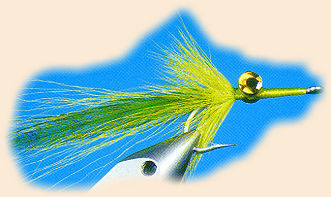 Tarpon Tamer |
|
|
Materials for the Tarpon Tamer
Thread: Flourescent green. Tail: Chartreuse bucktail, green Tiewell flash. Tail flank: Green hackle. Collar: Chartreuse neck hackle. Eyes: Dumbbell, stick-on, gold/black. Snout: Tying thread coated with Aqua Flex.
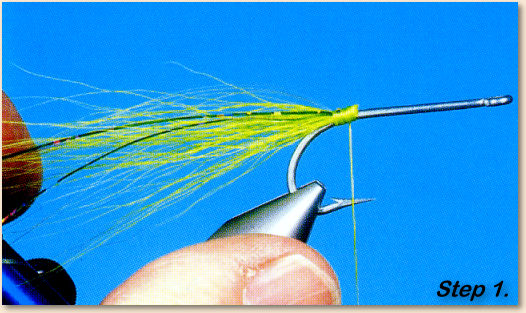 1. Place the hook in the vise and apply a short thread base at the back of the hook shank. Select a clump of chartreuse bucktail and tie it to the hook as a tail about twice as long as the shank. Top the tail with several strands of green Tiewell Flash that are slightly longer than the tail.
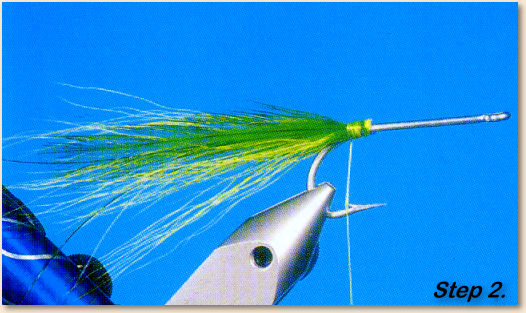 2. Pluck two feathers from a cape dyed dark green. Tie one to the near side of the tail and the other to the far side. Adjust their length so they are a bit shorter than the bucktail. Trim off the waste ends. Up to this point I've applied the materials using stationary tying techniques.
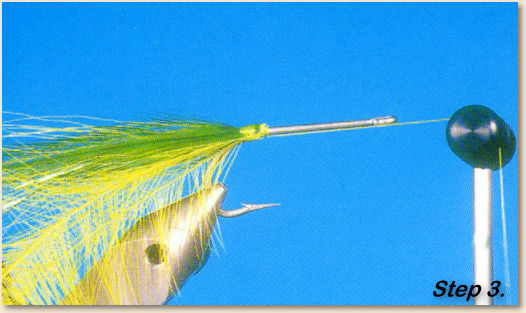 3. Select two strung neck hackles dyed chartreuse. Fold the fibers on each and tie them to the hook by their tips. Place the thread on the bobbin rest.
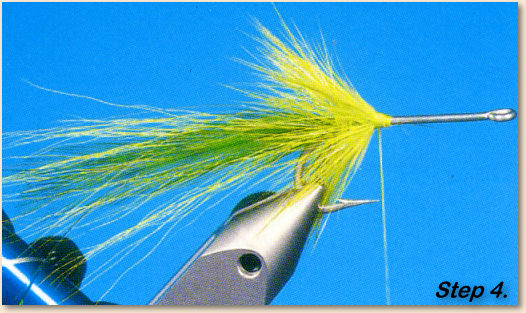 4. Hold the feather with the right forefinger/thumb and rotate the vise with the left hand to construct the collar. Tie off the feathers and trim their waste ends. Place several thread wraps tight against the hackle to force the fibers back collar style.
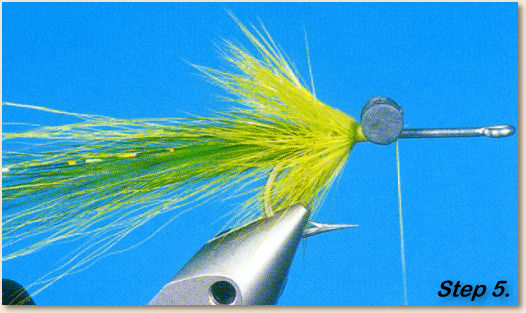 5. Tie on the dumbbell eyes directly in front of the collar. I used several figure-eight wraps to firmly anchor them then followed that with a drop of QuickTite super glue.
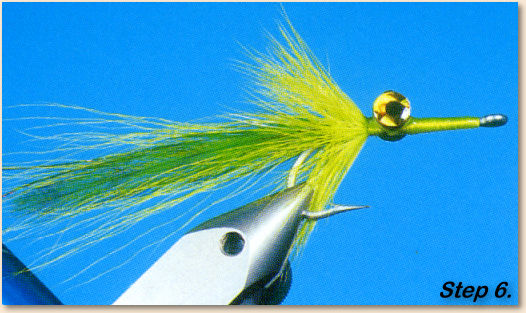 6. Build a tapered snout, whip-finish just behind the hook eye, and trim off the thread. Attach the stick-on eyes then coat the whole assembly (eyes and snout) with Aqua Flex. Place the fly in a turner to dry. Apply a second coat of Aqua Flex if it is needed. ~ Al and Gretchen Credits: This fly is an excerpt from Al and Gretchen's latest book, Rotary Fly-Tying Techniques, published by Frank Amato Publications. For more great flies, check out: Beginning Fly Tying, Intermediate Fly Tying and Advanced Fly Tying.
|